Employment Appointment Letter Template for Easy Hiring
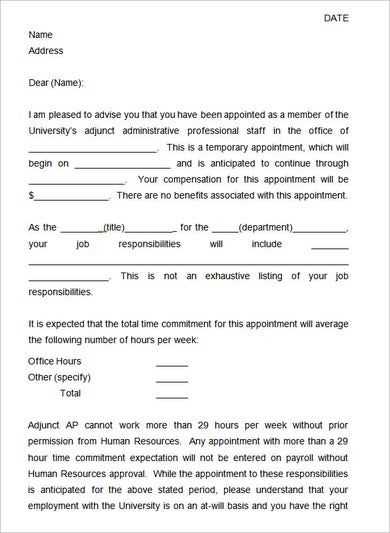
When hiring new staff members, clear communication is essential. A formal document serves as a way to ensure that both the company and the candidate are on the same page regarding their roles, responsibilities, and terms of employment. This document helps to avoid misunderstandings and provides legal security for both parties.
Key Elements of a Job Confirmation Document
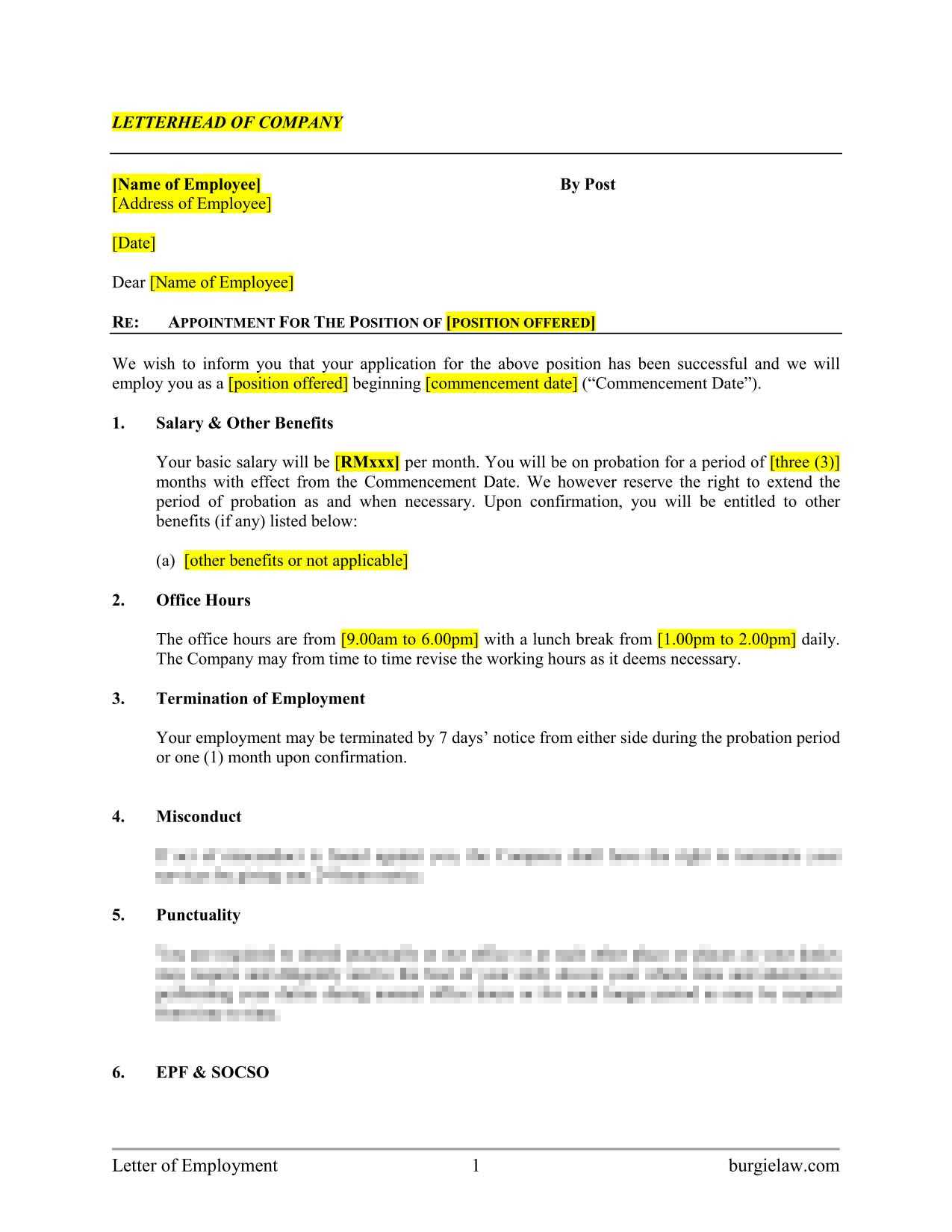
To make sure the document covers all necessary aspects, it should include the following details:
- Job Title: Clearly state the position the individual will hold.
- Start Date: Mention the specific day the new hire is expected to begin work.
- Compensation and Benefits: Outline the salary, bonuses, and other perks associated with the role.
- Work Schedule: Specify the working hours and any additional expectations regarding availability.
- Probationary Period: If applicable, mention any trial period and its terms.
- Reporting Structure: Identify the manager or supervisor the new hire will report to.
How to Tailor the Document to Specific Roles
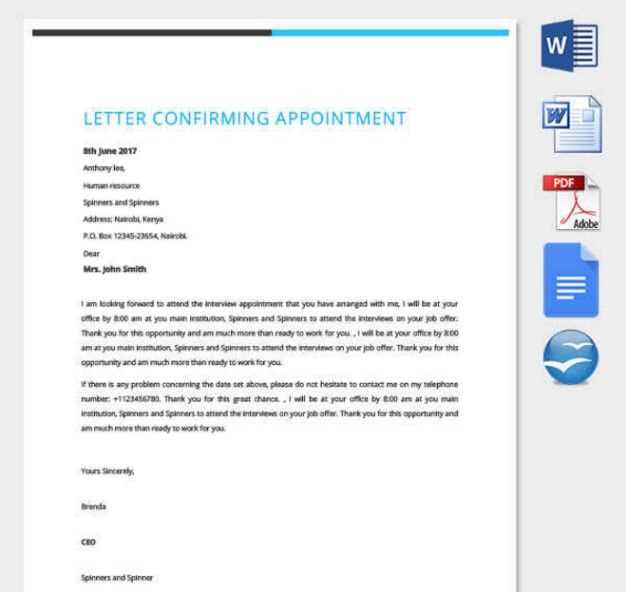
Each position has unique requirements. Make sure to adjust the document to reflect the specific expectations for the role. For example, a managerial position will likely require a different approach compared to an entry-level job. Customizing the content ensures that the candidate fully understands their specific responsibilities and expectations.
Avoiding Common Errors
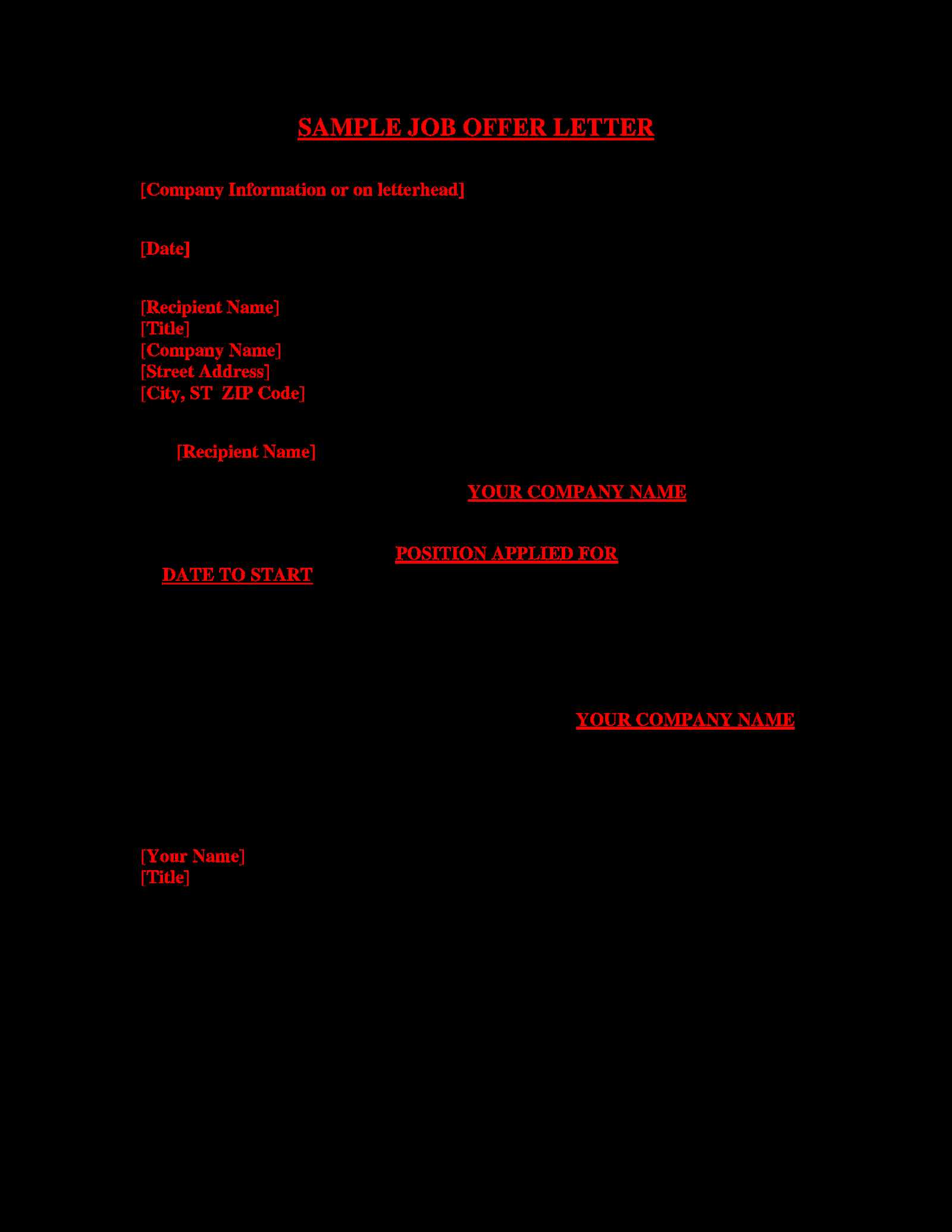
It’s easy to overlook small details when drafting such documents. Some common mistakes include:
- Missing key dates like the start date or probationary period.
- Vague descriptions of job responsibilities.
- Ambiguity around compensation or benefits.
- Using generic language instead of specific terms related to the role.
Legal Considerations
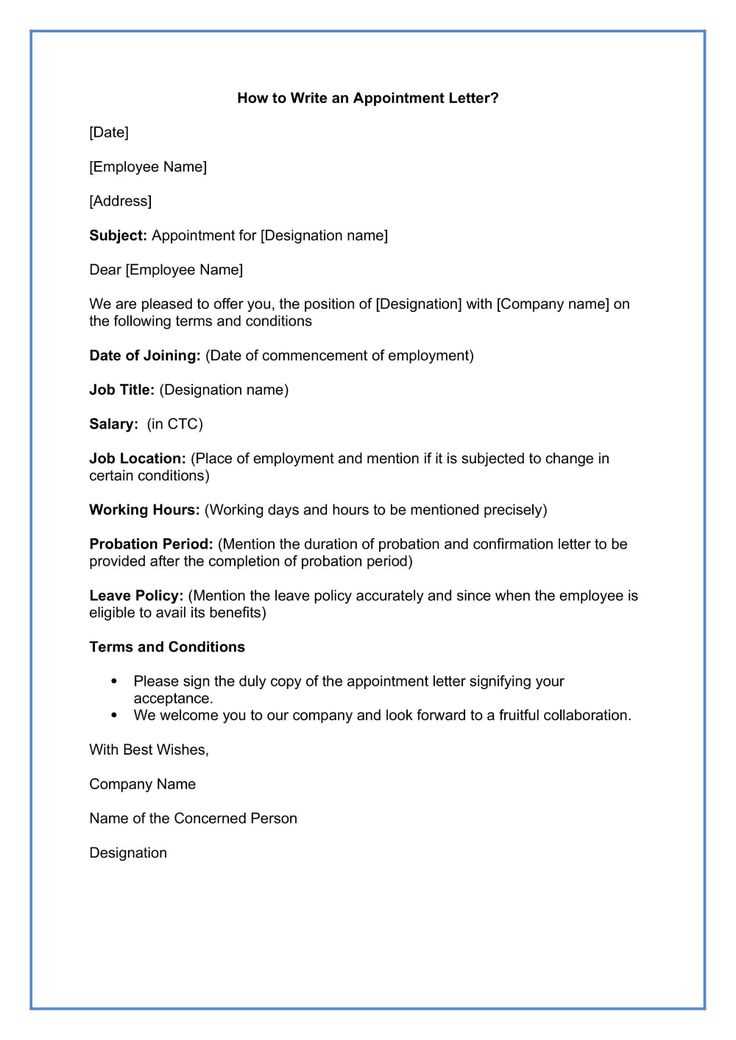
While this document serves as an informal agreement, it is still a legally binding contract. Therefore, ensure that all information is accurate and reflects the agreed terms. Consult legal experts if necessary to confirm that all local labor laws are adhered to and that the document is enforceable.
In conclusion, a well-drafted document is an essential tool for hiring new staff. By clearly outlining expectations, compensation, and responsibilities, both the company and the individual can move forward with a clear understanding of their roles, ensuring a successful working relationship.
Why You Need a Job Confirmation Document
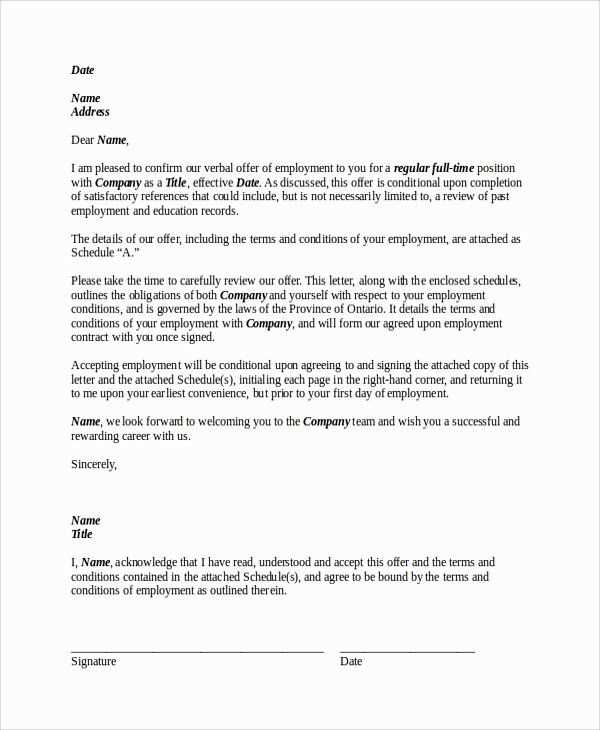
When hiring a new team member, it is crucial to have a clear and formal understanding between both parties. A well-structured document ensures that all terms and conditions are agreed upon, minimizing the risk of misunderstandings in the future. This essential record helps both the employer and the individual establish mutual expectations, creating a solid foundation for a productive working relationship.
Key Components of a Job Confirmation Document
The key elements of this official document should cover the most important aspects of the new hire’s role. These include the position title, compensation details, working hours, and the expected start date. Additionally, make sure to outline any benefits, such as health coverage or performance bonuses, as well as any conditions or trial periods that may apply. A clear structure helps both parties understand their commitments.
How to Personalize Your Job Confirmation Document
Each role and individual has unique needs. Personalizing the document ensures the candidate knows exactly what to expect. Tailor the content to reflect the responsibilities of the role, including any specialized skills or expectations. Customization can also include company-specific terms and policies, ensuring the new hire is well-informed about the organization’s culture and requirements.
Common Errors to Avoid in Job Confirmation Documents
When drafting this document, it is easy to overlook important details or be vague. Common mistakes include omitting key dates, such as the start date, or failing to clarify job responsibilities. Additionally, ambiguous language about salary, bonuses, or benefits can cause confusion. It’s essential to be precise and thorough in order to avoid misunderstandings later.
Legal Considerations for Job Confirmation Documents
Even though this document is primarily used for administrative purposes, it is still legally binding. It is important to ensure that the terms align with labor laws in your region and are in compliance with regulations. Consulting a legal expert to verify that the document meets all required standards can help prevent any future legal issues.
Templates for Various Job Roles
For each type of job, it’s helpful to have a ready-made structure. Different positions may require different content, especially for specialized or managerial roles. Customizable formats can be used as a base, which can then be adapted to fit the needs of specific job positions, ensuring consistency across your hiring process.